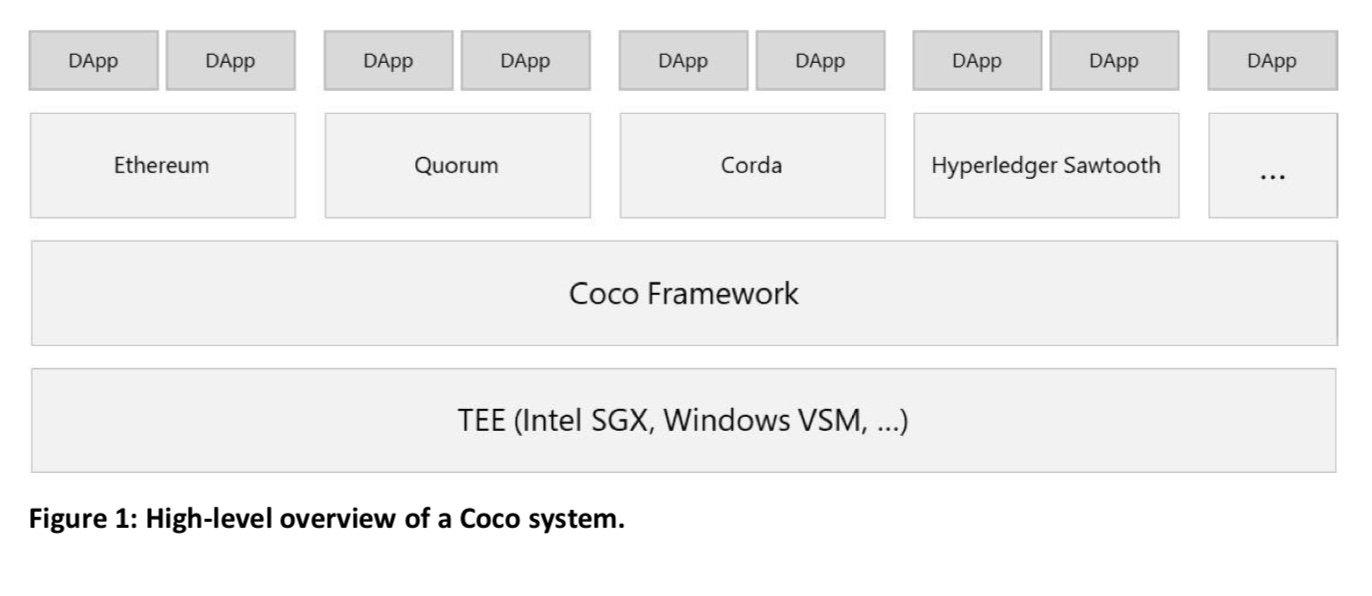With all the hype around “blockchain”, I was thinking the other day that people are starting to get blockchain fatigue. The term itself has been heavily overexposed – and it’s probably not the best time to write another blockchain article, right?
The problem is, though, that the overexposure of the blockchain concept has caused confusion. Everyone is talking about the potential solutions that we’ll see using “blockchain technology”, but we don’t always see practical examples of how these will be delivered. In fact, there are currently serious technical limitations to overcome for feasible solutions to be delivered, which I will explore in this article.
To ultimately overcome these limitations, I believe that we are now seeing the next iteration, Blockchain 3.0, which is designed with the demands of large enterprises in mind. Blockchain 3.0 will be where the bulk of consortium solutions are implemented.
This is no way means that the “public” blockchains (like ethereum), the basis of cryptocurrencies and public DApps currently, won’t be used for fantastic projects in future. It just means that there are certain requirements that blockchain 3.0 will have to address.

Blockchain is not Just about Currencies
Recently, I’ve been doing some public speaking at various events. When the topic is about blockchain, and potentially the exciting business solutions unlocked by blockchain, I normally hear questions about bitcoin. Many people still associate the two very closely, and with good reason, as bitcoin gave us the original blockchain.
However, as much as I like bitcoin, when I’m having an enterprise blockchain discussion with customers, I normally start by saying “foget about bitcoin for a minute”.
The reason I say this is because many people automatically bring all of the current issues with the public blockchains, the ones designed for cryptocurrencies, into the enterprise blockchain discussion. This sometimes seems to “kill” the enterprise blockchain discussion before it even starts, with many not getting to see potential benefits of the enterprise blockchain. To explore this concept, lets forget about cryptocurrency and re-examine the use case of blockchain outside of cryptocurrencies.
The Opportunity
Let’s go back to the opportunity that we see with the enterprise blockchain. Now here, you’ve probably read a million articles already on this topic - “10 Ways Blockchain will change Financial Services, Number 5 is particularly shocking!”……but really, clickbait headlines aside, the possibilities are very exciting.
Blockchain in the Enterprise context is about a data layer that can be shared across organizations in a safe and secure manner. You will see the use cases grow, across industries, day by day, but what you will also see are some patterns emerging.
Firstly, an enterprise blockchain solution seems to regularly involve the transfer of an asset, be it a physical asset, contract, or an asset of high value.
Secondly, there is a cross organizational workflow. The easy example here is a manufacturing process with many actors on the supply chain. A blockchain could be created to identify the state of a particular batch of goods, as it is being manufactured, with all actors being given a view into the current state of that batch. Supply chain is indeed a field where blockchain will play a big role going forward.
Thirdly, there would be an element of audit or reconciliation, that is usually causing pain, that can be relieved by an enterprise blockchain solution.
The potential use cases have already exploded, and everyday we see articles describing these. As I mentioned though, nobody talks about how these will be deployed. You are not going to deploy thousands of these “semi-private”, or consortium solutions, on ethereum, or any similar platform. Let’s investigate why……
How We Got Here
As mentioned, Bitcoin gave us the original blockchain, call it Blockchain 1.0. It is a simple ledger that records transactions in sequence, and the entire chain is distributed, with verification happening across multiple nodes to confirm a transaction.

We then saw this evolve to something which could include logic to perform all manner of tasks. The first Blockchain 2.0 implementation was the Ethereum Network, and the added code was called Smart Contracts.

Both of these became massive global networks, with nodes popping up everywhere to perform verification, and miners earning rewards for their verification efforts (in the form of the cryptocurrency itself). Further alternative blockchains were developed, with improvements in security, transaction speed and other areas, but the core pattern was a massive distributed public network on which new types of solutions could be built. It really was the start of something entirely new in the tech world.
The New Problem
The public blockchains were never meant specifically for the Enterprise world though. Although many of these have been proposed as platforms for enterprise solutions and could well end up being used for such solutions, especially business to consumer, a few deficiencies have come to light.
The public blockchains were designed to work in a tremendously hostile environment. This is the reason that the consensus mechanism implemented by blockchain technology was a big deal in the first place. Furthermore, transactions are “in the clear” for everyone to see, and multiple nodes execute the transaction for verification. This secure verification guaranteed (outside of a 51% attack), that transactions were correct and immutable.
When looking at using blockchain in the enterprise world, the very safeguards that ensure the integrity of public blockchain networks, some of which listed above, bring about scalability problems. For instance, the public ethereum network has an average processing rate of 20 transactions per second, with a typical transaction latency of around 10-20 seconds. By contrast, the Visa credit card processing system averages 2000 transactions per second. Newer blockchain technologies do address this, with other compromises. This isn’t the only issue though.
All transactions, smart contract code (bytecode) , and state are typically in the clear—visible to anyone who joins the network. This may be desirable in the cryptocurrency / public DApps world, but not in the enterprise world. For a public solution, total transparency is desirable. For a private Enterprise/ Consortium solution that utilizes Blockchain technology, why would you want everything exposed to the public? Once again, there are solutions being developed to address this, but there’s more to consider.
Large enterprises have become accustomed, over the last few decades, to building out secure, reliable high-performance infrastructure that they manage, to run their critical business applications and systems. These often come at significant cost, but this was also very necessary to keep an enterprise running in a highly competitive market environment.
Being used to this, will enterprises now build critical applications on public networks that offer no or unproven guarantees in terms of scale, uptime and security? Any enterprise architect knows that platform choice is critical due to risk mitigation, auditability, fault tolerance and level of service. Who provides these guarantees in a public network where one of the nodes processing your code could be a PC in someone’s bedroom?
Then there is the power issue. You may have seen the stats but basically power consumption of all the Bitcoin mining nodes are significant. What do we do about this? Firstly, Enterprise blockchain platforms will run on advanced clouds, where the power draw of compute has been optimized. Secondly, enterprise blockchains will allow you to choose consensus algorithms to determine the level of computational intensity required - being “private”, the consensus method need not be the most stringent.
What is the Point of a “Private” Blockchain?
Firsty, these enterprise blockchains could be consortium blockchains, shared between large enterprise organizations, government organizations and regulatory bodies. The consortium members are known and controlled. The actors are mature, with robust enterprise grade IT environments and security policies.
Secondly, when organizations are sharing confidential information with other organizations, they don’t normally want this to be public. The point of the blockchain is easy sharing of information between members of the consortium. In the past you could have had a single database to do this – the question is where does it sit and who own it? The blockchain makes this “public” between members of the consortium.
Lastly, enterprises want familiar development and management options, as per the rest of their IT systems. This reduces risk, both in terms of security and time to solution. Enterprise blockchains will allow smart contract development in a variety of languages and tools like Visual Studio, which are already familiar to enterprise development teams.
Blockchain 3.0 - The COCO Framework
An early leader in presenting an enterprise blockchain platform is the open-source COCO framework. The COCO framework allows a consortium of enterprises and government bodies to implement a blockchain solution, using the ledger technology of their choice ( eg. ethereum, corda, hyperledger), but also implements some technological enhancements that address the shortcomings of the public blockchain solutions.

Some of the benefits of a framework like the above would include :
- Faster transaction speed – The COCO framework runs in the Azure cloud, and this implements Intel’s SGX in order to create a Trusted Execution Environment. The network of trusted nodes created reduces the consensus problem from Byzantine fault tolerance to crash fault tolerance. This means that the consensus algorithm can be simplified in certain applications – ultimately giving you a much faster transaction speed than on a public blockchain (where you would never do this).
- Flexible confidentiality models - Because COCO uses industry standard authentication and authorization ( like Azure AD ) , transactions and smart contract code can be processed in the clear yet revealed only to authorized parties. This would reduce the need for complicated confidentiality schemes, like Zero Knowledge proofs and zkSNARKS, which can become computationally intensive.
- Reduced energy usage – This would be a major advantage. By reducing computationally intensive consensus algorithms, like Proof-of-Work, and running nodes in an optimized cloud, power usage can be reduced and controlled.
When I speak to enthusiasts about enterprise blockchains and all of the above, some of them immediate start protesting about whether its decentralized, whether it’s a “real” blockchain etc. This isn’t the point.
As enterprise blockchains develop (and the Coco Framework is one example, probably the most developed offering thus far) , you will see a deviation from some of the goals of the public blockchains in order to satisfy the needs of private consortium solutions. This is perfectly fine – enterprises building blockchain applications for public consumption could still choose to utilize one of the public chains where required, and those will continue to stay true to the original goals of blockchain (some of them at least).
Conclusion
With large corporations now scrambling to think about how they will utilize blockchain, the time for this technology has arrived. The technical community has sold the concept, and the business community has started to embrace it. What would be a disaster now is if some applications were deployed onto public chains and the performance or security let the solution down, causing negativity around the concept.
The evolution of public blockchains will continue though, make no mistake. Look at technologies such as Bitcoins Lightning Network and Ethereum’s Casper Protocol and Sharding System. But it will take time for the winners to emerge, and even a highly performant public chain may not be desirable for a consortium to utilize for various reasons.
Therefore blockchain 3.0 will be the emergence of the cloud-driven, enterprise grade blockchain platforms, like the Coco framework, and the further innovation that those will bring. Once enterprise architects start understanding the differences between the different types of blockchain platforms, I think that we will see the anticipated uptick in consortium solutions being delivered.







Leave your comments
Post comment as a guest